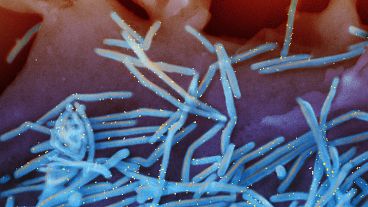Japanese scientists have identified a protein that could play a pivotal role in maintaining two subcellular structures linked to ageing and disease.
Researchers have identified a protein that could open new avenues for treating age-related diseases.
The protein helps to clear away damaged organelles, subunits of a cell which carry out important jobs within it and are vital to its functioning.
Two of them - mitochondria and lysosomes - help to respectively produce energy in cells and keep them healthy.
Damage to these organelles has been linked to ageing and many diseases, including neurodegenerative diseases such as Parkinson’s, Alzheimer’s, Huntington’s Disease, and amyotrophic lateral sclerosis (ALS).
In a new study published in the journal Proceedings of the National Academy of Sciences, scientists at Japan’s Osaka University and other medical schools say the protein called hexokinase domain containing 1 (HKDC1) helps to protect both mitochondria and lysosomes.
“Modulation of HKDC1 function could prevent cellular senescence which is related ageing and age-related diseases,” senior author Shuhei Nakamura, who is a professor of biochemistry at Nara Medical University, told Euronews Next.
Cellular senescence is when cells stop dividing, which can prevent cells from becoming cancerous but contributes to ageing. Researchers have said that some studies suggest that preventing senescence may counteract human ageing and age-related diseases.
This study also specifically mentions that HKDC1 could impact lung and liver cancers.
“Cellular senescence is implicated to have causal roles for many age-related diseases including neurodegenerative disease, cardiovascular disease, fibrosis and frailty,” Nakamura said.
“So, the function of HKDC1 potentially impacts these diseases by preventing cellular senescence”.
Vidyani Suryadevara, an instructor of radiology at Stanford University, told Euronews Next that this "novel finding identifies a critical molecular mechanism which affect more than one organelle in the cell simultaneously."
She said it could unravel "a new molecular target for the development of new senolytic drugs" that target cellular senescence.
How does this protein protect organelles?
Mitochondria act to create energy for a cell. When they are damaged, they should be removed so the cell can survive.
Neurodegenerative diseases can occur when damaged mitochondria accumulate, according to Harvard researchers.
The removal of damaged mitochondria happens through a process called “mitophagy” and depends on proteins called PINK1 and Parkin.
The scientists have now found that the protein HKDC1 and its interaction with another protein called transcription factor EB (TFEB) is critical for this removal of damaged mitochondria.
They also found that reducing HKDC1 interfered with lysosomal repair.
“HKDC1 is localised to the mitochondria, right? Well, this turns out to also be critical for the process of lysosomal repair,” added Nakamura in a statement.
“You see, lysosomes and mitochondria contact each other via proteins called VDACs. Specifically, HKDC1 is responsible for interacting with the VDACs; this protein is essential for mitochondria–lysosome contact, and thus, lysosomal repair”.
The researchers say maintenance of mitochondria and lysosomes was previously poorly understood.
This article has been updated with comment from an expert who was not involved in the study.



